From lechón that’ll make you question every other roast pork you’ve ever had, to a mofongo so perfectly garlicky it might make you weep a little—we’re about to take you on a flavor-packed ride through Puerto Rico. This isn’t just a list of tasty dishes. This is your cheat code to understanding Puerto Rican culture—one bite at a time. With roots that go deep into Taíno, Spanish, and African heritage, Puerto Rican food (aka cocina criolla) is soul food with serious personality.
But here’s the real secret: every dish tells a story. A story of migration, survival, celebration, and community. Puerto Rican cuisine wasn’t built in test kitchens—it was born at family tables, in beachside kiosks, and at roadside lechoneras where the music is loud and the portions are generous. It’s a cuisine that doesn’t apologize for its boldness or its love of fried things. It’s proud, it’s vibrant, and it’s impossible to experience passively. You taste it, sure—but you also hear it sizzling, feel it warming your soul, and sometimes, yes, wear it on your shirt.
So whether you’re planning a food pilgrimage across the island or just want to understand why your Puerto Rican friend insists their abuela makes the best arroz con gandules—this guide’s for you.
Let’s eat.

1. Mofongo
What It Is:
Mashed green plantains seasoned with garlic, olive oil, and pork cracklings (or chicharrón), molded into a dome, and typically topped with a protein and rich broth. It’s Puerto Rico on a plate—starchy, savory, soulful.
A Little History:
The roots of mofongo come from West African fufu, brought over by enslaved Africans and transformed with local and Spanish influences. It’s a dish of resilience, creativity, and bold flavor.
Where to Eat It:
La Estación (Fajardo) – This legendary spot in a converted gas station is known for wood-fired everything, but their seafood mofongo is next-level. Imagine perfectly grilled shrimp lounging on a garlicky plantain throne.
Raíces (Old San Juan) – It’s touristy, yes. But their classic mofongo is the real deal—and the kitschy decor is all part of the experience. Go for pork, stay for the plantains.
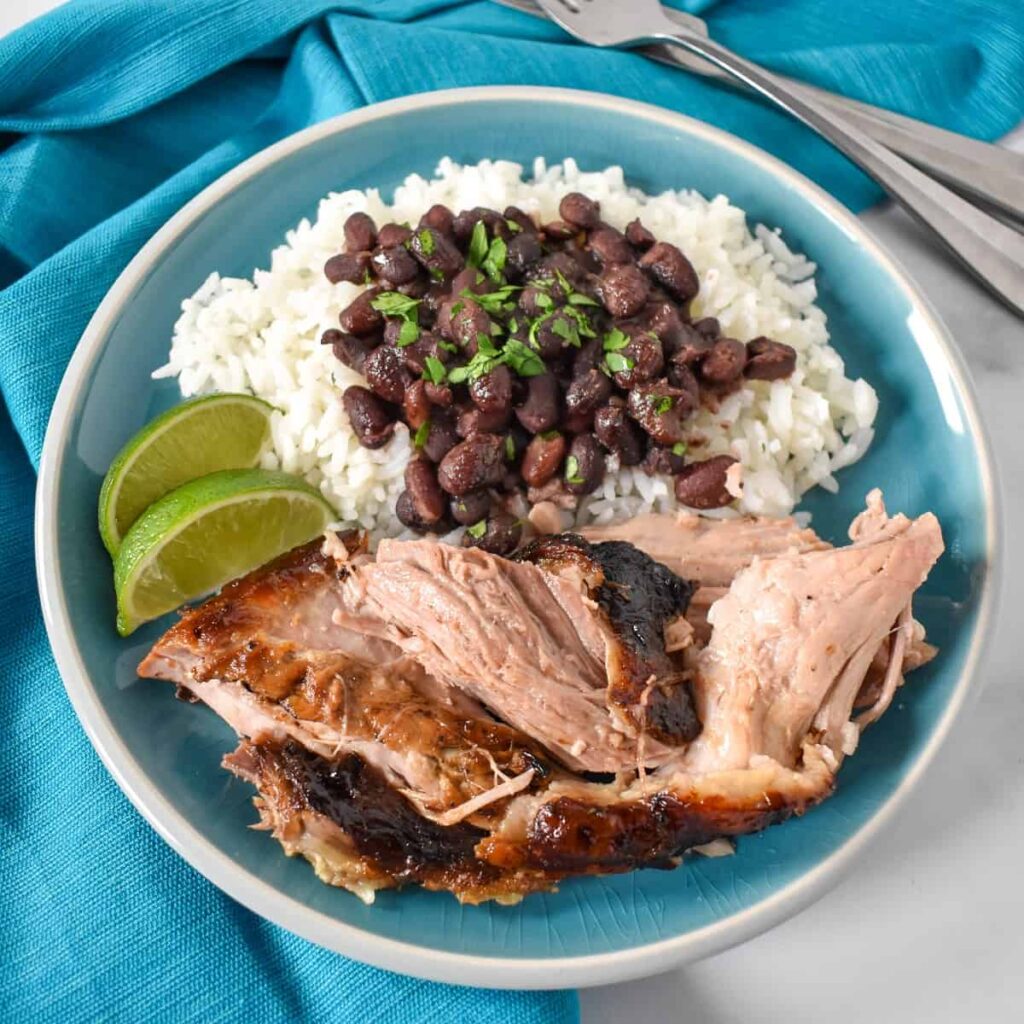
2. Lechón Asado
What It Is:
Whole-roasted suckling pig, marinated in adobo and slow-cooked over an open flame. The skin is crispy, the meat is tender, and your cholesterol may never be the same.
A Little History:
A true centerpiece of Puerto Rican fiestas and family gatherings, lechón dates back to Spanish colonial times. It’s a celebratory dish, best enjoyed in large groups with cold beer and loud music.
Where to Eat It:
Guavate (Cayey) – This mountain town is lechón central. The stretch of road known as La Ruta del Lechón is lined with lechoneras. Start at Lechonera Los Pinos or El Rancho Original, grab a plate, and don’t forget the arroz con gandules (rice with pigeon peas).
Pork Highway Food Trucks (Bayamón) – For a more modern twist, hit up roadside vendors doing fusion takes on classic lechón. Sandwiches, tacos, even sushi rolls—if you can wrap it, they’ll pork it.
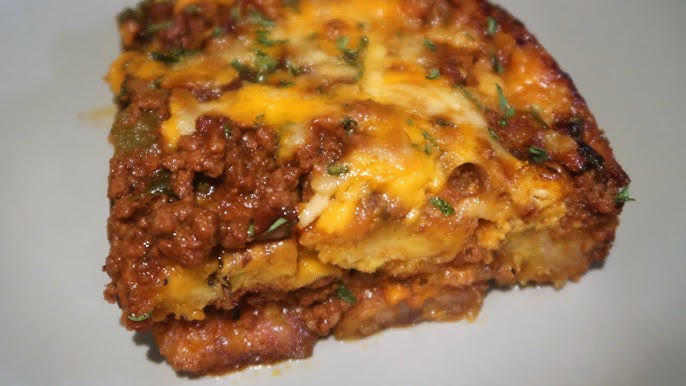
3. Pastelón
What It Is:
Basically Puerto Rican lasagna, but instead of pasta, you’ve got layers of sweet plantains, ground beef picadillo, and cheese. Sweet, savory, and outrageously comforting.
A Little History:
Pastelón blends Caribbean sweetness with Spanish-influenced ground meat stews. It’s popular around Christmas but delicious year-round.
Where to Eat It:
Santaella (Santurce, San Juan) – Upscale but unpretentious, this is where pastelón puts on its fancy pants. Expect refined flavors without losing the grandma-made-it soul.
El Jibarito (Old San Juan) – Classic and casual, this local gem serves pastelón the way abuelita would’ve: dense, rich, and gooey with love.
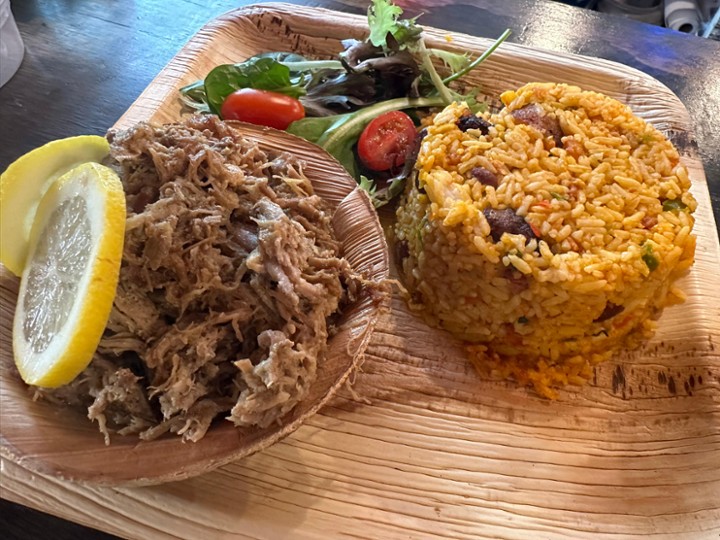
4. Arroz con Gandules
What It Is:
Puerto Rico’s national dish: seasoned rice cooked with pigeon peas, sofrito, and pork bits. It’s the side dish that steals the show.
A Little History:
Sofrito—the garlic, onion, cilantro, and pepper base that gives the dish its soul—has roots in both Spanish and Taino cooking. The use of gandules (pigeon peas) came via West African culinary traditions.
Where to Eat It:
La Casita Blanca (San Juan) – This is the place you want to be when you’re craving comfort. Served in generous portions, their arroz con gandules is as close to homemade as you can get without invading someone’s kitchen.
Kiosko El Boricua (Luquillo Kiosks) – After a beach day, this is your perfect salty, savory, carby reward.
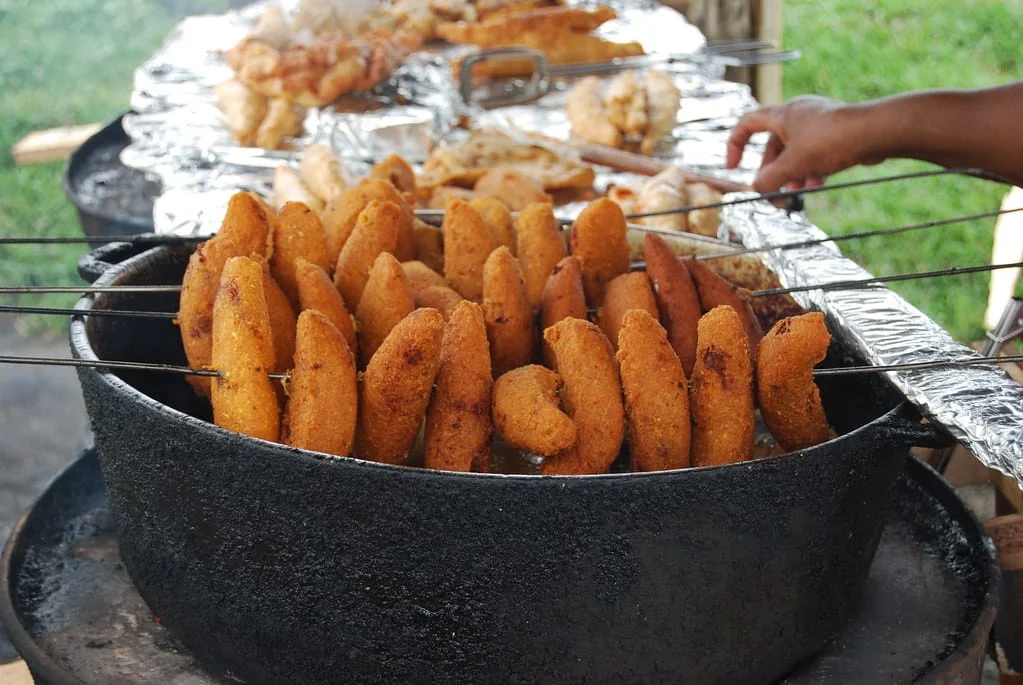
5. Alcapurrias
What It Is:
Deep-fried fritters made of green bananas and yautía (a root vegetable), stuffed with savory meat—usually ground beef or crab.
A Little History:
These fritters are a street food staple with Afro-Caribbean roots. They’re often found at beachside stands and fiestas patronales (town festivals).
Where to Eat It:
Kiosko El Nuevo Horizonte (Luquillo) – A paradise for fritter lovers. Their crab alcapurrias are crispy, golden, and packed with flavor.
Antojitos de Mar y Tierra (Arecibo) – Slightly off the radar, this roadside gem is a local favorite for alcapurrias and cold Medallas (Puerto Rico’s beer of choice).
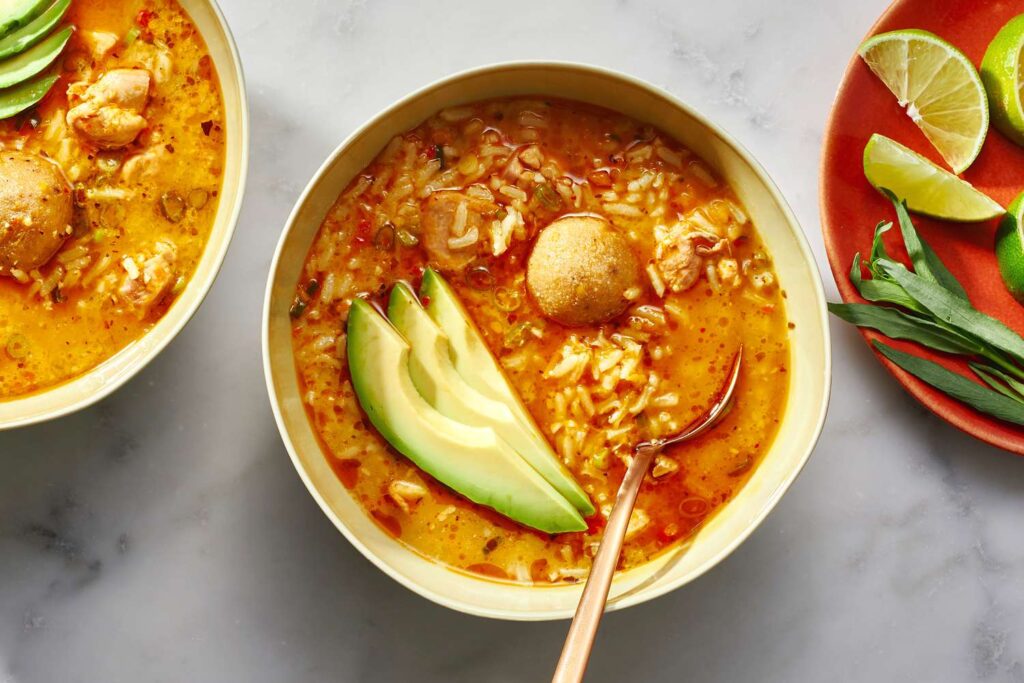
6. Asopao de Pollo
What It Is:
Puerto Rico’s answer to chicken soup—except way thicker, more tomatoey, and full of rice, chicken, olives, peppers, and sofrito. Comfort food for tropical rainy days.
A Little History:
A hybrid of Spanish rice stews and indigenous Caribbean ingredients, asopao is often eaten during big celebrations and family reunions.
Where to Eat It:
El Platanal (Mayagüez) – Tucked in the western region, this local eatery has a cult following for its soul-warming asopao.
Café Puerto Rico (Old San Juan) – Ideal for travelers wanting a classic take with a killer mojito on the side.

7. Tostones & Amarillos
What They Are:
Plátanos two ways:
Tostones are green plantains, double-fried and salted. Crunchy, golden, perfect for dipping.
Amarillos are ripe plantains, fried once and sweet as sin. Caramelized edges and melty centers.
A Little History:
Plantains were introduced by the Spanish but became deeply integrated into Afro-Caribbean cooking. Today, no Puerto Rican meal is complete without one (or both) on the plate.
Where to Eat Them:
La Alcapurria Quemá (Santurce) – This tiny spot does sides like they’re the main event. Get the tostones with garlic mojo or creamy mayo-ketchup.
Cocina Abierta (Condado) – For an upscale twist, try their amarillos glazed in rum and paired with artisan cheese.
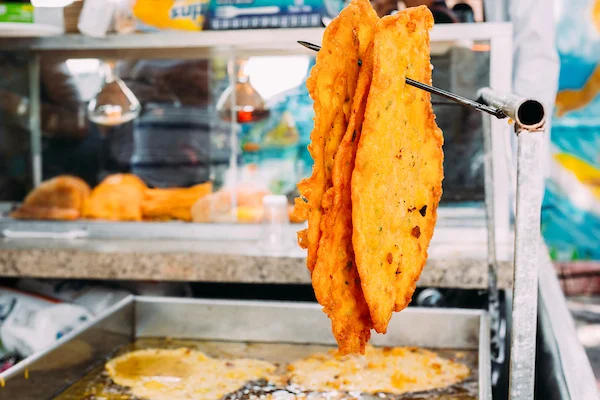
8. Bacalaitos
What It Is:
Codfish fritters—lightly battered, deep-fried, and seasoned like your life depends on it.
A Little History:
Salt cod came from Europe as a preserved protein source and became a staple across the Caribbean. In Puerto Rico, it got the fritter treatment—and the rest is delicious history.
Where to Eat It:
Kiosko Luquillo #2 (Luquillo) – They serve massive bacalaitos, bigger than your face. Crispy, greasy, perfect with hot sauce.
El Balcón del Zumbador (Naranjito) – High in the mountains with incredible views—and bacalaitos worth the drive.
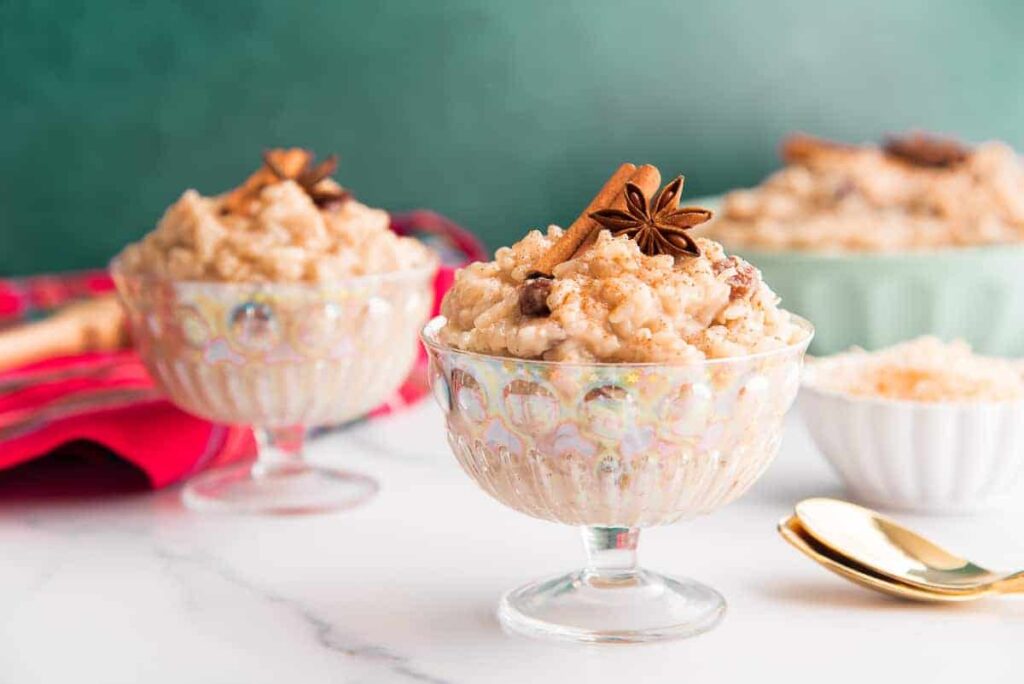
9. Tembleque & Arroz con Dulce
What They Are:
The desserts that prove Puerto Rico knows how to end a meal:
- Tembleque is a coconut milk pudding dusted with cinnamon.
- Arroz con dulce is spiced rice pudding with ginger, cloves, and raisins.
A Little History:
Both desserts blend Spanish techniques (think: custards and puddings) with Afro-Caribbean flavors, especially coconut and spice.
Where to Eat Them:
Kasalta Bakery (Santurce) – This iconic bakery serves up old-school sweets with zero pretense. Presidents have eaten here. You should too.
Panadería España (Bayamón) – Come for the bread, stay for the coconut desserts and dangerously good quesitos.

10. Piña Colada
What It Is:
Yes, it’s a drink. But it’s practically a dessert and a national treasure rolled into one—blended rum, pineapple, and coconut cream.
A Little History:
Invented (allegedly) at the Caribe Hilton in 1954, though Barrachina in Old San Juan also claims it. Either way, it’s been cooling down beach bums and cruise-goers ever since.
Where to Drink It:
Barrachina (Old San Juan) – Go ahead, play tourist and order the “original.”
La Factoría (San Juan) – One of the world’s best bars. Try their house version with artisanal twists.
Final Sip: The Flavor of Puerto Rico
Puerto Rican food isn’t just food. It’s a story of survival, of celebration, of blending what’s available with what’s beloved. It’s the echo of drums in Loíza, the aroma of sofrito simmering at abuela’s house, and the crispy snap of a hot tostone devoured by the sea. The flavors are bold, the portions generous, and the culture behind it all—rich, layered, and deeply proud.
Every bite is a timestamp. It carries the resilience of African heritage, the spice of Spanish conquest, and the heartbeat of the Caribbean. It’s a cuisine shaped by hardship and joy, resistance and rhythm. It’s a plate of arroz con gandules at Christmas, a roadside bacalaíto after a surf session, a rum-soaked piña colada that tastes like sunshine and rebellion. You don’t just taste Puerto Rican food—you feel it in your chest, in your stories, in the way you instantly start planning your next plate before you’ve finished the first.
So go hungry. Ask locals what their favorite spot is, and be ready to get ten passionate answers in return. Try the mystery fritter. Stay for the second mofongo. Say yes to the extra plantains, always. And don’t be surprised if your one dinner plan turns into a four-meal day with new friends and an invite to someone’s backyard asopao party.
That’s just how it is on the Island of Enchantment. Come for the food. Leave with a full belly, a salsa beat in your head, and a deeper understanding of what it means to eat with soul.